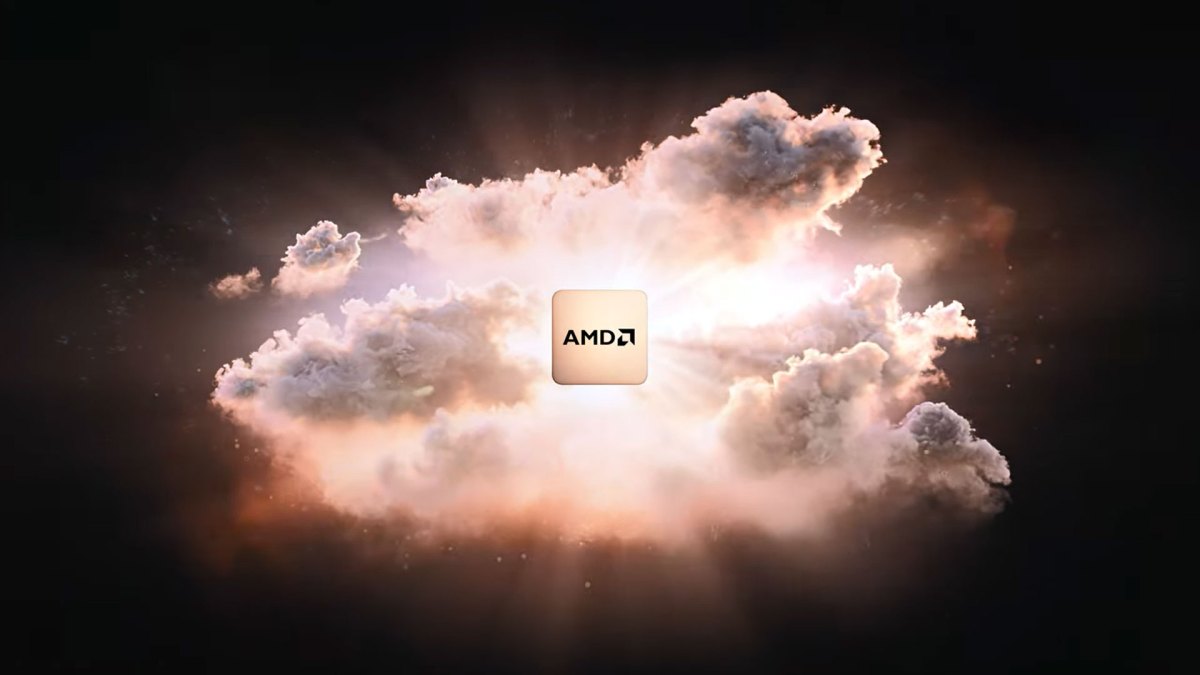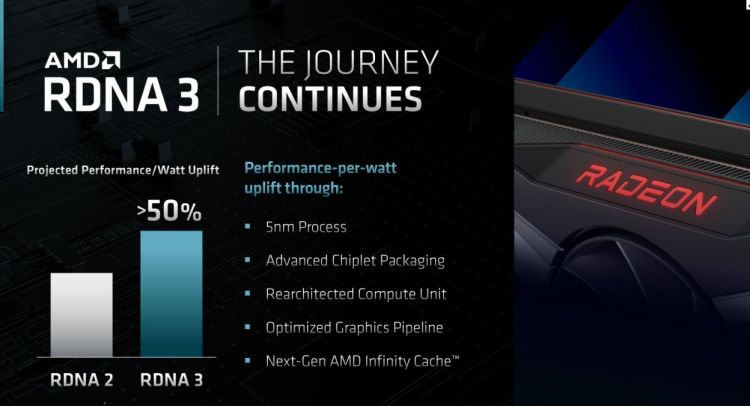At Financial Analyst Day summer 2022, AMD confirmed some new details regarding its upcoming RDNA 3 architecture that will feature in Radeon 7000 Series GPUs later this year. Some of the information was reconfirmed from estimates outlined in prior years, but it also confirmed some prior leaks were true. Thanks to this, we can further hone in on what to expect for gaming performance out of next generation of graphics card.
One promising statistic is that RDNA 3 will apparently offer another >50% performance-per-watt increase over the existing RDNA 2 architecture featured in today’s Radeon RX 6000 Series. This was similarly the case in the move from RDNA 1 to RDNA 2.
Additionally, AMD announced that RDNA 3 GPUs will be manufactured on the more advanced TSMC 5nm manufacturing process, which will allow for more performance or efficiency, based on AMD’s design preferences. This will mark a transition from the TSMC 7nm node that was widely used for RDNA 2.
One thing to keep in mind though is that AMD did not specify how it measured the performance-per-watt efficiency increases, and didn’t provide actual performance estimates. It also did not specify how much the node advantage contributed to the statistic versus the architectural changes alone. Either way, the minimum 50% performance-per-watt improvement is worth getting excited about.
The chiplet approach
Confirmation of the chiplet packaging technique is the other major takeaway from this announcement. We’ve been expecting this for some time due to several leaks that pointed at this. The first mention of using chiplets for RDNA 3 came in Spring 2021 from a serial industry leaker. The second came in February earlier this year from an AMD engineer, who shared a little too much information about projects they were involved with.
In short, this announcement confirms AMD has developed the manufacturing techniques and necessary technologies to implement multiple GPUs on a single graphics card, somewhat like it did with Ryzen Zen CPUs. This design could allow AMD to efficiently scale performance to new highs than what would be possible with a traditional single GPU design.
You can think of this multi-GPU (MCM) design like using SLI or Crossfire, but without the compatibility and lackluster performance issues that come with those older technologies, provided RDNA 3 works as intended. The difference should be that the OS won’t know there are multiple GPUs, with the data computation being managed on the architectural level. AMD will also be the first company to implement such a design for a gaming architecture.
Massive gaming performance boosts sound likely
The notion that AMD managed another 50% gen-over-gen efficiency improvement yet again is a big deal. The implementation of chiplets is also particularly exciting for improving performance. Given how powerful today’s best graphics cards already are, mainstream gamers should be able to reach new levels of performance such as 144+ fps 4K gaming with ultra settings in today’s more demanding games. 1440p 240Hz should also be an easy enough affair. We may even be able to start enjoying advanced visual effects like ray tracing without killing our framerates.
These levels of performance are already attainable with certain high-end graphics cards. Examples include the $2,000+ USD 450W+ Nvidia RTX 3090 Ti and the $1,100+ USD 350W+ AMD RX 6950 XT. However, these expensive halo products mean little to the masses. The expectation is that next gen graphics cards will bring these performance tiers at more affordable prices and with less power consumption.









Published: Jun 10, 2022 06:15 pm